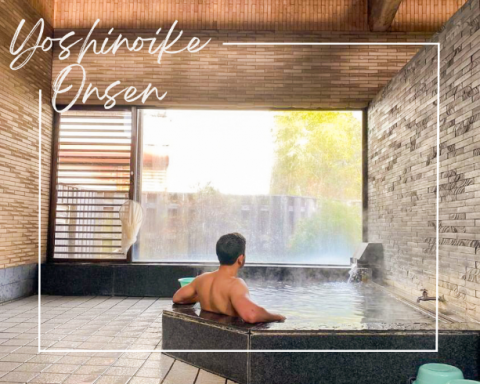Main content starts here.
Summer is the season to climb Mt. Fuji!
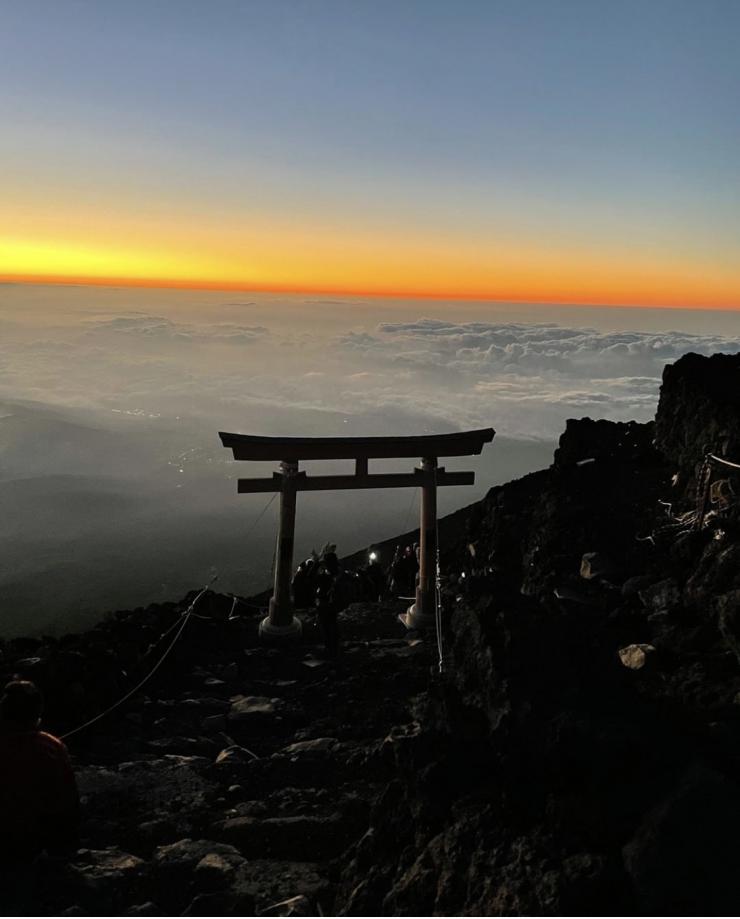
▲Torii Gate on Mt. Fuji
Every year, thousands of people from all over the world come to Japan to climb Mt Fuji. Located in both Yamanashi and Shizuoka prefectures, there are four different trails to reach the top of Japan's most iconic mountain. Yoshida Trail, in Yamanashi, is the most popular one.
At 3,776 meters high, Mt. Fuji is Japan's highest mountain. Due to the altitude, the weather gets cold near the top, especially at night, and rains can start anytime. To help make sure you have a safe climb and enjoy Mt. Fuji to the fullest, we have prepared a guide with instructions and tips on how to get there, what to bring, and what to do.
Planning
Do NOT Bullet Climb
"Bullet Climbing" is the term used for climbing from 5th station to the top of Mt. Fuji without resting at one of the mountain huts, departing at night to reach the top on time to see the sunrise. When people don't have enough rest, the risks of suffering altitude sickness or causing an accident get higher. Be sure to plan a safe climb.
Avoid Crowded Days
To avoid congestion and help keep the trails safe, the recommended limit for the number of climbers per day was set on 4,000 people for the Yoshida Trail. There are no restrictions, but checking the congestion forecast calendar is advised for those who want to avoid traffic jams and have a pleasant climb.
Check your Physical Strength
Check your physical strength and plan your climb according to it. It is advised to reach the hut where you will spend the night by about 4pm, in order to have enough time to rest before resuming the climb.
Reserve a Hut ASAP
As soon as you set a date, make your reservation! In a period of only 2 months, 280 thousand people climb Mt. Fuji so the huts get booked up fast. If all the huts are full on the day you plan to go, don't endanger yourself by trying to bullet climb! It is better to change your plans and go on a different day when a hut is open.
Register Your Plan
You can write your climbing plan and submit a paper version of it to the police station on the 5th Station, or use websites/apps as Compass:
www.mt-compass.com
Check the Weather Forecast
On the day before you climb Mt. Fuji, be sure to check the weather forecast to see if the conditions are suitable for a safe climb. Don't put yourself in danger. It is better to cancel your plans than face a risky situation.
Gearing Up
Let's talk about what you should wear when climbing Mt. Fuji. Is gonna be cold? Hot?
![]()
▲Stunning view from the top of Mt. Fuji
Every 100 meters above sea level, the temperature gets 0.6 C lower. So even when it is 35 C at sea level, once you reach the 7th Station (2,700 m high) on Mt. Fuji, the temperature should be about 19 C and at the top of Mt. Fuji should be about 12 C. At night, it gets even colder and the lowest temperature can be lower than 5 C.
Clothing
In summer, despite the altitude, it is still hot until the 5th Station, and there are always people suffering from dehydration and heat stroke. Therefore, it is necessary to prepare clothes for both hot and cold weather, and we recommend that you dress in layers to keep your body warm as the temperature goes down.
Sunscreen / UV Protection
From the 6th Station, there will be no more trees on the trail, leaving you directly exposed to the sunshine for many hours, which can cause sunburns. Wearing tank tops will leave your shoulders unprotected, and having a sunburn when you need to carry a backpack is not pleasant. Avoid this situation by wearing long-sleeve shirts.
Wearing a hat and sunglasses is also advisable. The sunshine will hit the back of your neck for many hours, so be sure to wear a hat that protects this area and be careful to not let the wind blow it away. Additionally, be sure to check the UV protection of your glasses.
Rain Gear
The weather in the mountains changes quickly, especially in summer. Even if it is sunny in the morning, you can face storms in the afternoon or at night. It is not recommended to use an umbrella in the mountains: it won't protect you from the rain and it can harm other people if it flies due to strong winds. Be sure to take appropriate rain gear with you and pack it in a place where you can access it as needed.
Quick-Dry Underwear
Wearing quick-dry underwear is very important. During the day, you will walk a lot and sweat, or get wet from the rain, and if you are not able to dry off all the way, at night it will get cold and lower your body temperature. In extreme cases, this can even lead to hypothermia.
Cotton clothes are good at absorbing sweat, but they take a lot of time to dry. Invest in clothes made of high moisture absorption and quick drying materials, such as polyester. And if you get wet, be sure to dry yourself as soon as possible.
Hiking Boots
It is possible to climb wearing sports shoes, but we recommend high-cut hiking or trekking boots that will protect your ankles. If you are planning to wear shoes that you haven't worn for a while, check the shoe soles, and make sure they are still intact.
Headlamp
If you are aiming to see the sunrise at the top of Mt. Fuji, it is necessary to bring a headlamp, since you will need to climb in the dark. You will need to use both hands for some parts of the trail, so handheld flashlights are not recommended. LED headlamps are brighter and consume less energy. Be sure to bring extra batteries too.
Water
There are no water fountains on Mt. Fuji. To avoid dehydration and altitude sickness, it is important to drink a lot of water. It is recommended to take 1.5 to 2 liters of water with you. On the Yoshida trail, you can buy water at the mountain huts during the ascent, but there are no huts on the descending trail, so be sure to save some water for when you go down.
Helmet
Mt. Fuji is an active volcano, and there is always the risk of eruption. If there is an eruption, you will need to start descending immediately, and especially on Yoshida Trail, where the number of climbers is far more compared to the other trails, the chances of accidents are much higher.
In addition to eruptions, there are also risks of being hit by rocks falling from higher areas, so it is advised to wear a helmet. On the Yoshida trail, you can borrow helmets at the 6th Station.
Dust Mask / Hiking Gaiters
Going down the mountain can be harder than you think. Since there are many people descending at the same time, it can get dusty and pebbles might get inside your shoes. This is where wearing hiking gaiters and a dust mask can come in handy. The mask can also be used to protect you from volcanic ash in case of an eruption.
Mobile Battery
Electronic equipment, such as smartphones and cameras, are almost indispensable for climbing nowadays. But, at mountain huts, it is almost impossible to charge them, since there are not enough power outlets. Be sure to bring a spare battery in case of an emergency.
Safety Tips, Manners, and Rules
It is important to keep some general rules in mind so you can complete your climb safely and avoid causing problems with other climbers. Here, we will lay out some situations you may face when climbing Mt. Fuji.
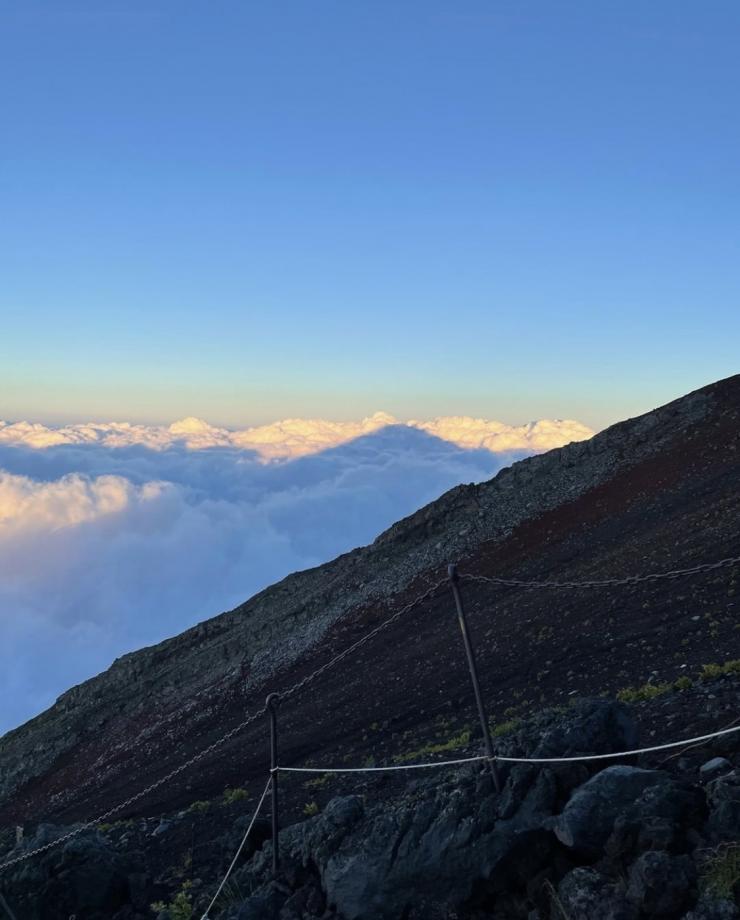
Communicate with Group Members
As we mentioned before, there are four trails to climb Mt. Fuji, and you can see them in the map below:
www.camp-outdoor.com/tozan/fujisan/fujisanmap.pdf
Each trail has a different color: Yoshida Trail in yellow, Subashiri Trail in red, Gotenba Trail in green and Fujinomiya Trail in blue. Be sure to share information about which trail you will use with all members of your group.
Mt. Fuji is a Special Protected Zone
Mt. Fuji is part of the Fuji-Hakone-Izu National Park, and the area above the 5th Station and Aokigahara Forest are considered Special Protected Zones, according to the National Parks Act. It means that the fauna, flora, rocks, and tree branches are all protected, and they cannot be taken without the authorization of the Ministry of the Environment.
Some people believe that there is no problem in taking small rocks with them, but you have to remember that more than 280 thousand people climb Mt. Fuji every year (those who climb beyond the 8th Station). If every visitor were to take a small rock, you can easily imagine how this would cause dramatic effects to Mt. Fuji's environment in a short amount of time.
Yoshida Trail
On the Yoshida Trail, from the 6th Station, the ascending and descending trails separate. On the ascending trail, you will find public toilets and places selling water and food at the huts past the 7th Station. But on the descending trail, there are no toilets between the huts at 8th and 7th Stations, and you will not be able to buy water until the 5th Station, so be sure to use the bathroom before going down the mountain.
On the descent trail, there is a point where you need to be careful to not take the wrong path. It is located at the 8th Station, where the descent trails of the Yoshida Trail and Subashiri Trail separate. Keep left for the Yoshida Trail.
At the 8th Station, it is possible to access the descent trail from the ascent trail, so in case of an emergency, you can always turn back here.
It is advised to wear a helmet, especially past the 7th Station on the ascent trail, where the risk of being hit by falling rocks starts to increase.
From the 7th Station, the trail gets rocky and you will need to use your both hands in some areas. Do not rely on the ropes, they are used only to show where the trail is, and they might come off if you pull on them. Also, due to health conditions or other emergencies, some people can not reach the 8th Station and need to start descending from the ascent trail. Be considerate and let them pass.
If you are climbing at night to see the sunrise from the summit, be aware that the trail gets extremely crowded from the 9th Station. Do not rush or climb outside the trail. From the Yoshida Trail you can see the sunrise from any place, so keep safe and enjoy the view.
Mountain Huts
Because Mt. Fuji is considered a Special Protection Zone, it is forbidden to set tents anywhere on the mountain. Make a reservation at one of the huts.
Water and space become valuable things when climbing Mt. Fuji. The space available at the hut is very narrow, sometimes only enough for a sleeping bag and nothing more. Organize your luggage outside the sleeping room to not disturb other climbers who are trying to rest.
You will be tired when you arrive at the hut, but avoid sleeping as soon as you arrive. When you sleep, your breath becomes shallow and the chances of getting altitude sickness increase. When you arrive, spend some time awake, enjoy the food and view until you get used to the altitude. Then, it should be okay to sleep.
Many people are unable to sleep well at the huts, sometimes because they get anxious to see the sunrise, sometimes because it's noisy to bright due to lights from other climbers, but it is important to rest to prevent altitude sickness and/or injures that may be caused by fatigue. If you are a light sleeper, bring an eye mask or earplugs.
To be able to see the sunrise at the summit, many people start waking up from 2am or earlier, depending on where their hut is. But not everyone wants to see the sunrise, so be considerate and refrain from using lights or speaking loudly inside the huts.
Toilets
All toilets beyond the 5th Station, public ones or ones at the huts, are environmentally friendly. You must pay a fee to use them. The money is used to cover the maintenance costs, so please contribute and bring coins with you to put in the fee boxes (you cannot use bills).
Altitude Sickness
Dizziness, headache and nausea are symptoms of altitude sickness. If you start feeling any of these, stop, rest, take deep breaths and drink water. If you don't feel better after a while, prepare to descend. You will feel better in a lower altitude, so do not keep climbing. It is better to recover and try again another time.
Thunderstorms or Eruptions
If you are ascending, evacuate to the nearest mountain hut. There are no emergency evacuation centers between the 7th and 8th Stations. If you are already going down, look for the shelter below the 7th Station. If you are far from the huts and shelter, keep to the side of the trail closest to the mountain. Do not rush.
Accidents or Injuries
Contact the local safety headquarters: 0555-72-1477 (24 hours). Be sure to inform them of the name of the closest mountain hut or the number of the closest sign on the trail.
In case of an injury, you can ask for help at 5th, 7th and 8th Station first-aid centers. Depending on the level of your injury, you might need to get carried back to the 5th Station by a crawler, and from there you can get carried away by an ambulance. Please note that crawlers cannot be used during heavy rains or typhoons, and you will be requested to pay a fee to use them.
Stay safe and we hope you enjoy climbing Mt. Fuji!
More Info
Official Mt. Fuji website:
http://www.fujisan-climb.jp/en/
Published on
- April 14, 2022
Share
-
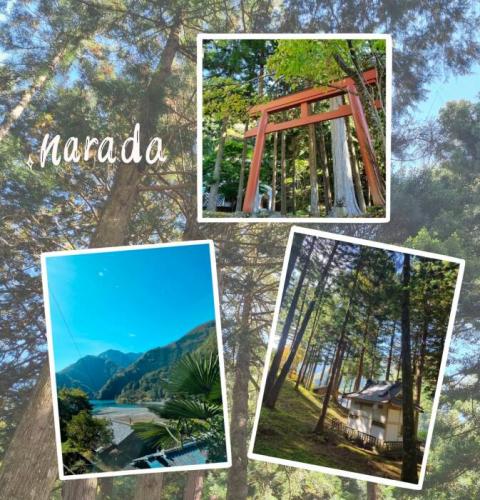
Narada Unveiled: Yamanashi’s Best-Kept Secret!
March 19, 2024
-
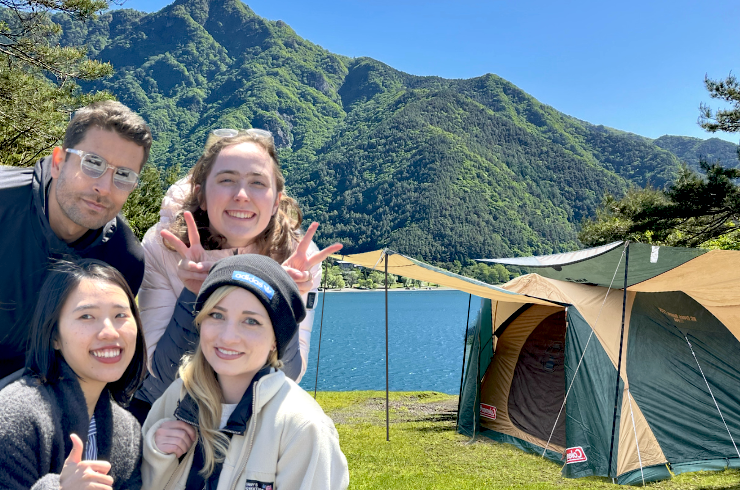
All-Inclusive Camping: PICA Fuji Saiko
June 22, 2023
Home of Mt. Fuji > Staff Journal > Hiking Mt. Fuji
